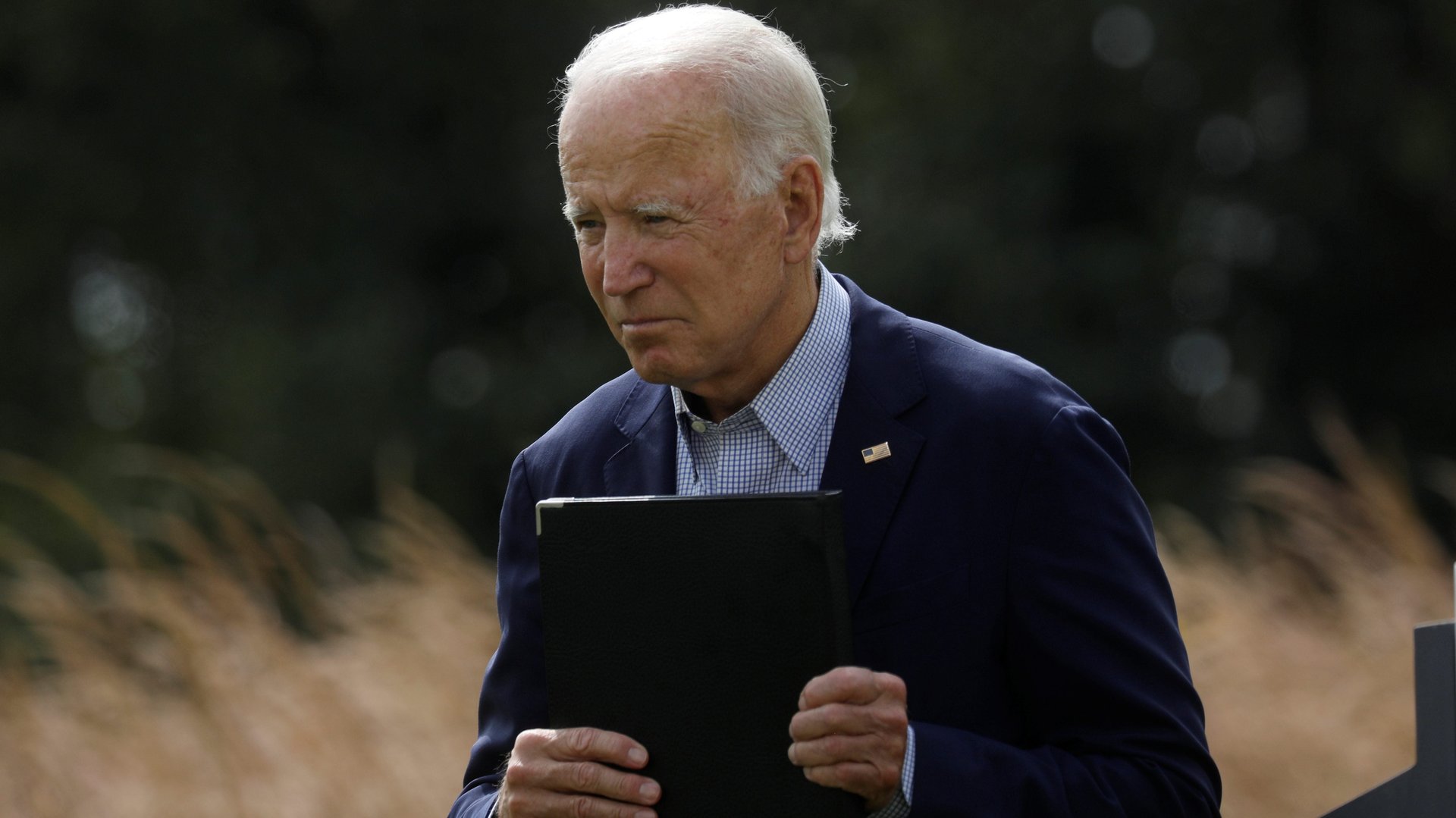What Biden will do in his first week to unravel Trump’s climate damage
Former US president Donald Trump’s long war against policies to benefit the climate ends today, after its last few battles ended in defeat for his administration.


Former US president Donald Trump’s long war against policies to benefit the climate ends today, after its last few battles ended in defeat for his administration.
On Jan. 19, a Washington DC appeals court tossed one of the Environmental Protection Agency’s most damaging climate rollbacks, a loosening of restrictions on emissions from power plants. Last week, the administration suddenly bailed on another plan to relax carbon capture requirements for new coal plants. And earlier in the month, a long-sought sale of oil drilling leases in the Alaskan Arctic was a flop.
Now, starting the afternoon of Jan. 20, incoming US president Joe Biden is planning to waste no time in shooting off a rapid-fire round of executive orders and directives aimed at crumbling the remains of his predecessor’s climate agenda, according to a statement released Wednesday morning by the new administration.
“What we’re getting is a very clear, strong, early signal from the administration that they intend to put climate change at he top of their agenda,” said Rachel Cleetus, climate and energy policy director at the Union of Concerned Scientists. “There’s a lot of reason for hope.”
The list of several first-week climate action items falls broadly into two buckets: new and improved environmental regulations, and climate and clean energy-related spending programs to be hammered out with Congress in Biden’s promised $2 trillion pandemic recovery bill.
The actions in that first bucket are ultimately geared toward informing one of the administration’s most important 2021 climate priorities: announcing to the world a new economy-wide emissions reduction target in line with the Paris agreement goals. Step one is formally rejoining the agreement, which Trump pulled out of; the administration is expected to initiate that process on inauguration day.
“The organizing principle is to really understand what each agency has the authority to do under existing law, that can contribute to meeting an ambitious target that puts the US back in a leadership position,” said Dan Lashof, US director of the World Resources Institute (WRI). According to WRI, by pursuing every available avenue toward emissions reductions, the US should be able to commit to cutting its greenhouse footprint at least 45-50% below 2005 levels by 2030.
The list of actions includes:
- Directing all federal agencies to “immediately review and take appropriate action to address” Trump-era policies or regulations that are damaging to the environment or public health.
- Establishing new limits on methane emissions, new vehicle mileage standards and emissions limits, and efficiency standards for appliances.
- Placing a moratorium on Arctic oil and gas leasing, and reviewing boundaries of Utah’s Bears Ears and other national monuments that were changed under Trump.
- Revoking authorization for the Keystone XL oil pipeline.
- Re-establishing an Obama-era interagency working group to set a “social cost of carbon,” a metric the government uses to judge the cost of climate damage.
Although Biden plans to issue all of these directives on Day One, those that require the drafting of new regulations will take time, possibly years, to wind through the tedious bureaucratic process.
Of these, Lashof said, the most important may be setting new tailpipe emissions standards for cars, and granting California a waiver it has sought to set its own more aggressive standards. Emissions from power plants, once the chief villain of climate change, have actually fallen during Trump’s tenure as renewables and natural gas get cheaper. Transportation emissions, meanwhile, are rising (not counting a pandemic-related drop-off over the last year). Fortunately, some major automakers have said they support stricter standards, which should mitigate the risk of a court battle.
The Trump administration’s loss in court this week over its Affordable Clean Energy rule for power plant emissions, meanwhile, will make it easier for Biden to draft a replacement. That rule, however, will almost certainly be contested by fossil-hungry utilities and coal-reliant states, as a previous Obama version was. It’s not clear how the Supreme Court, now more conservative than that faced by Obama, would fall in such a case.
With Democrats now in control of the Senate, federal spending will play at least as important role in Biden’s climate playbook as executive-branch actions. The pandemic stimulus bill that Biden has promised to introduce in his first month will likely include money for electric grid upgrades, infrastructure for electric cars and buses, enhanced technology to detect and seal methane leaks in natural gas systems, workers to plug abandoned oil and gas wells, R&D for carbon capture technology, low-carbon hydrogen fuel, and other clean energy priorities.
Trump’s climate legacy won’t vanish overnight. The loss of progress during his term will ultimately cost the climate at least 2 billion tons of CO2 no matter what Biden does, according to the Rhodium Group. But it’s clear that the next four years will be very different from the last.
“Pretty much everything he did will ultimately be swept away,” Lashof said. “The biggest problem is that we lost four years, and there’s a lot of catching up to do.”